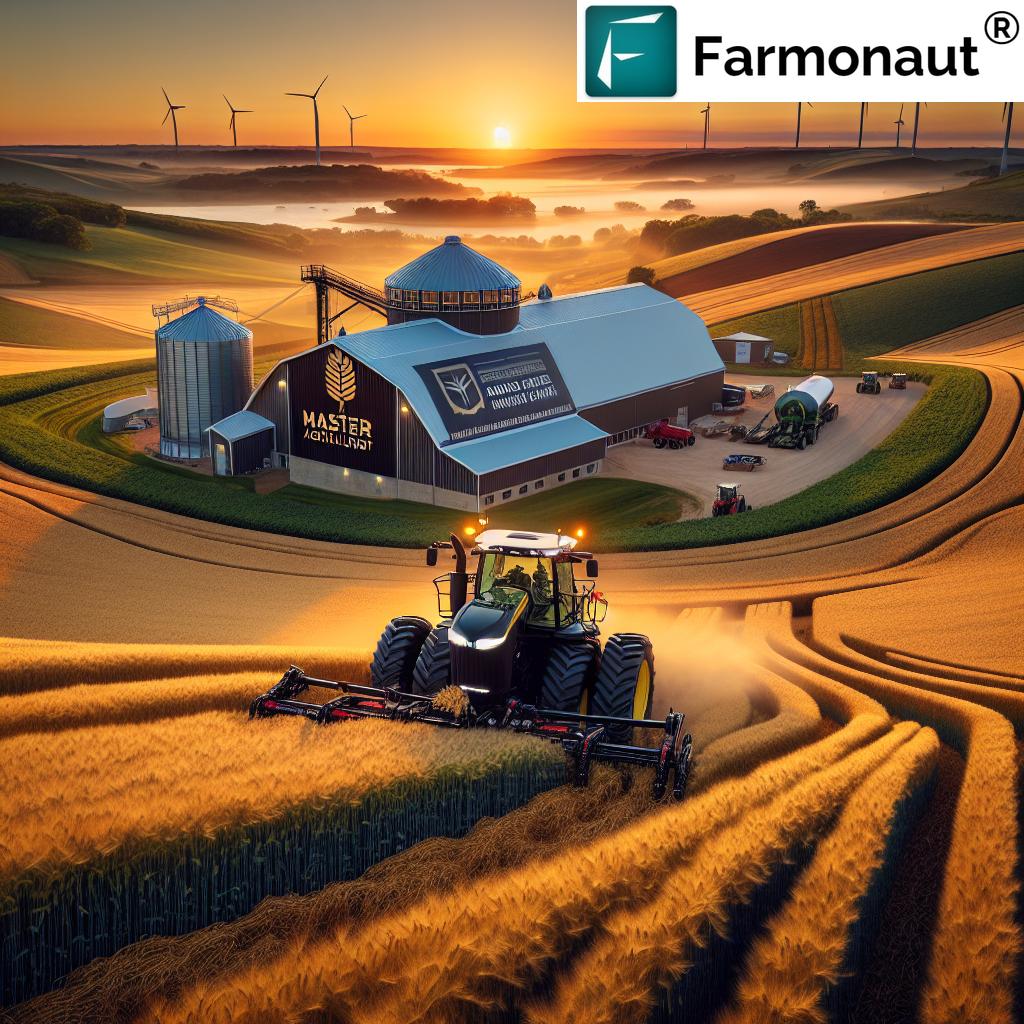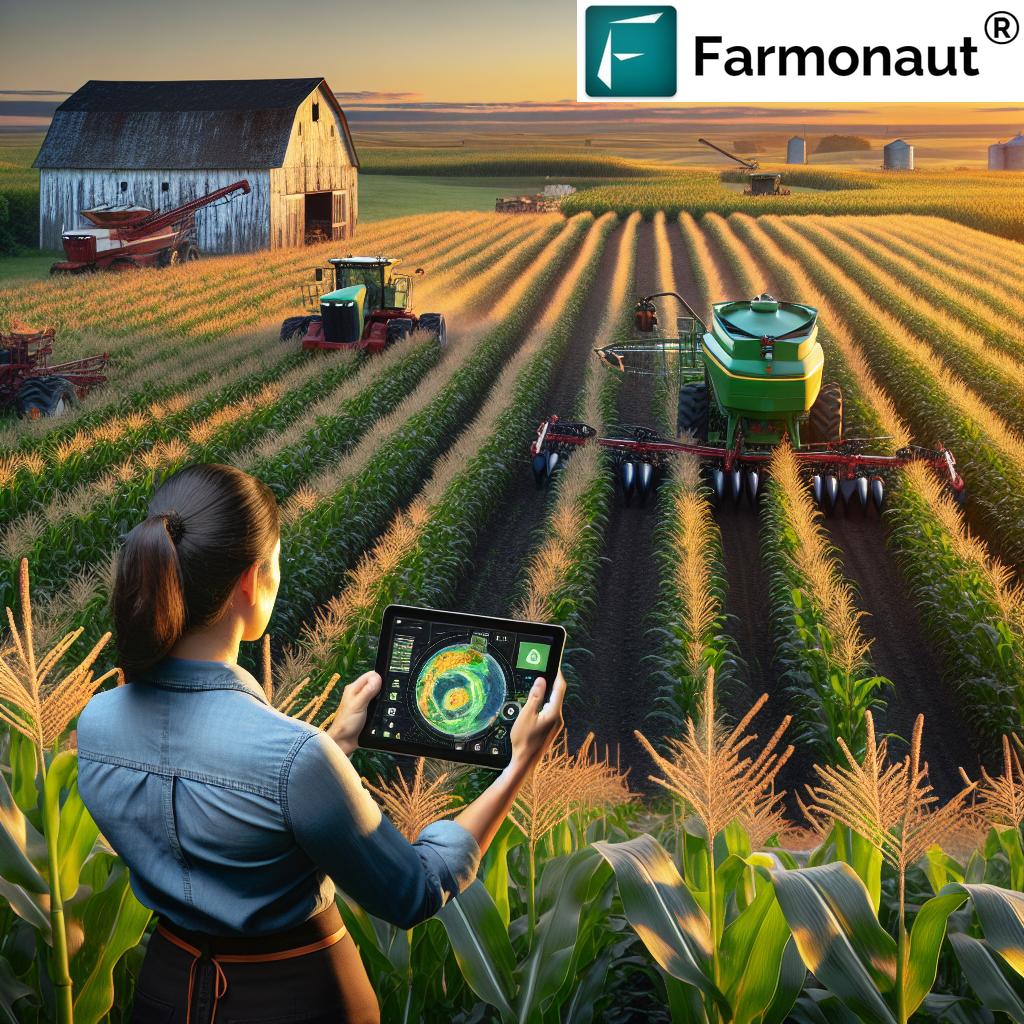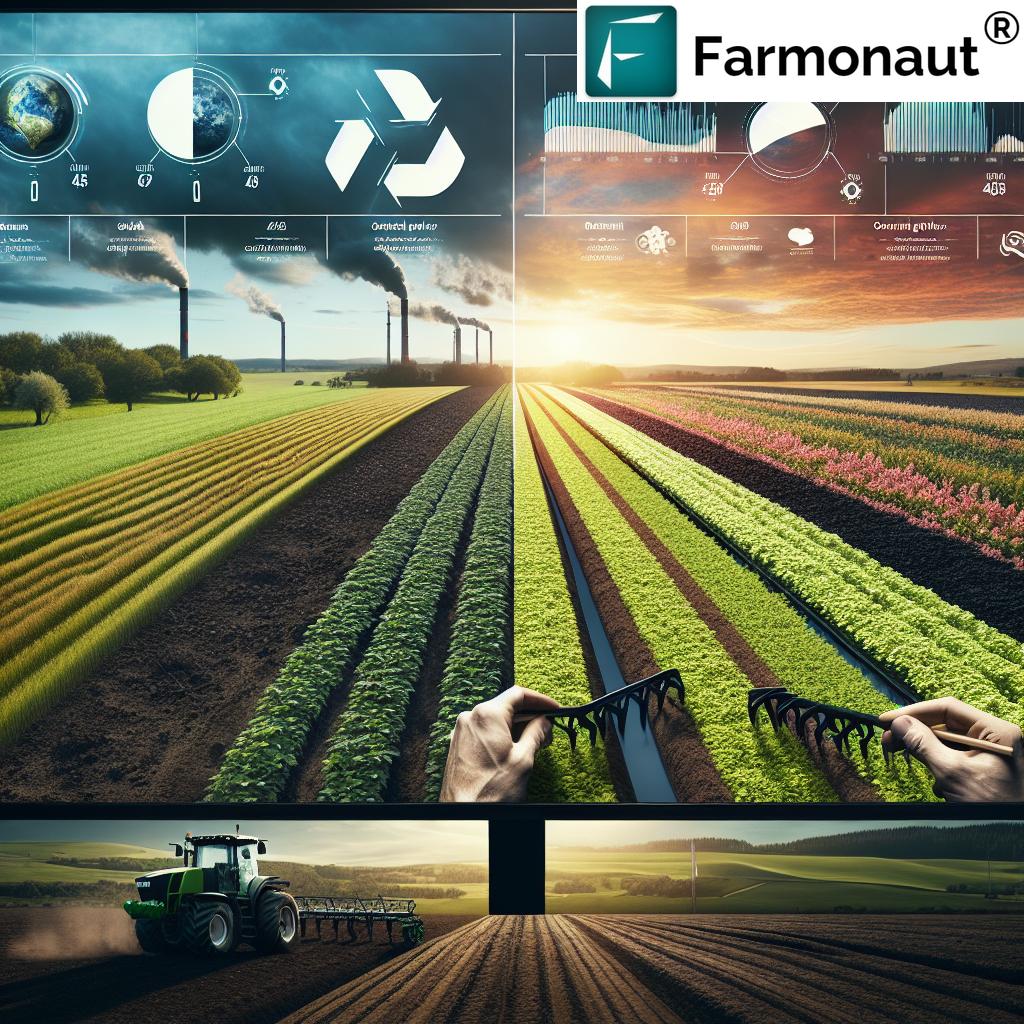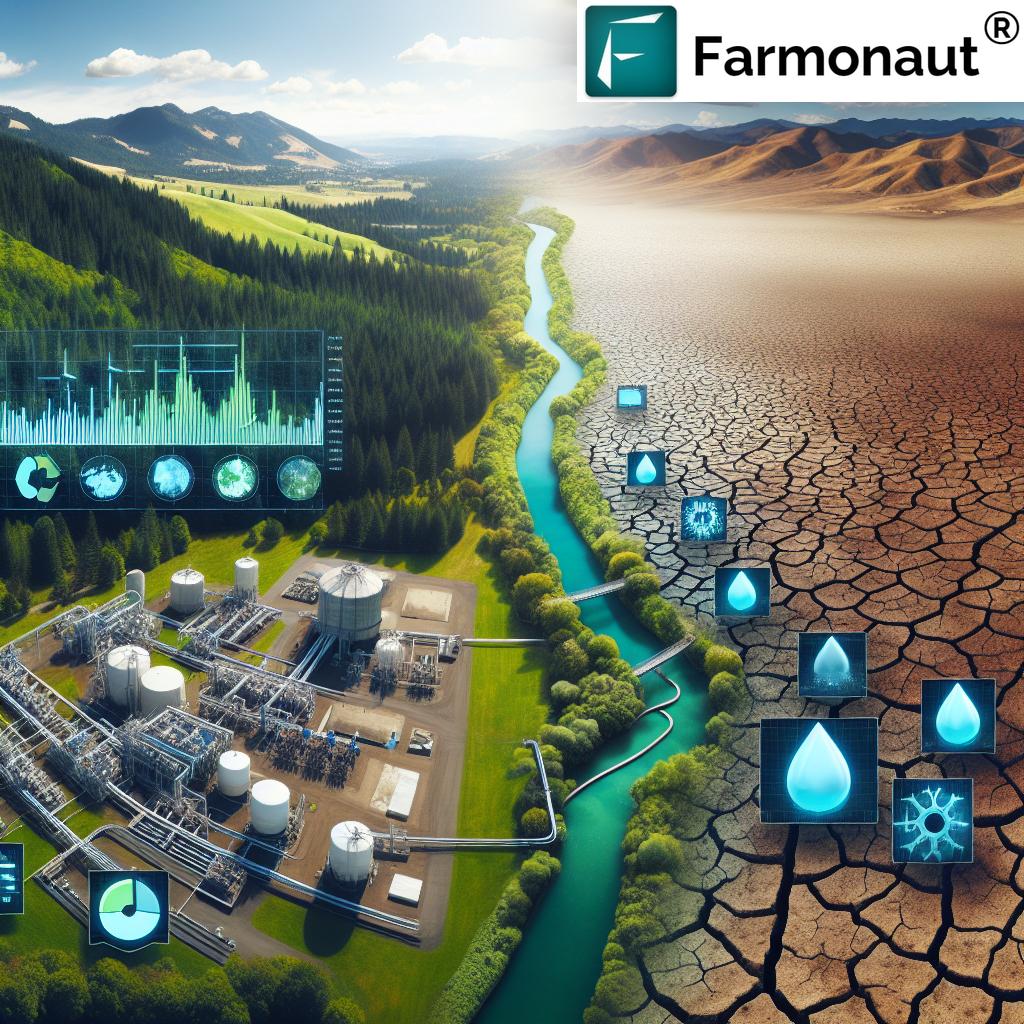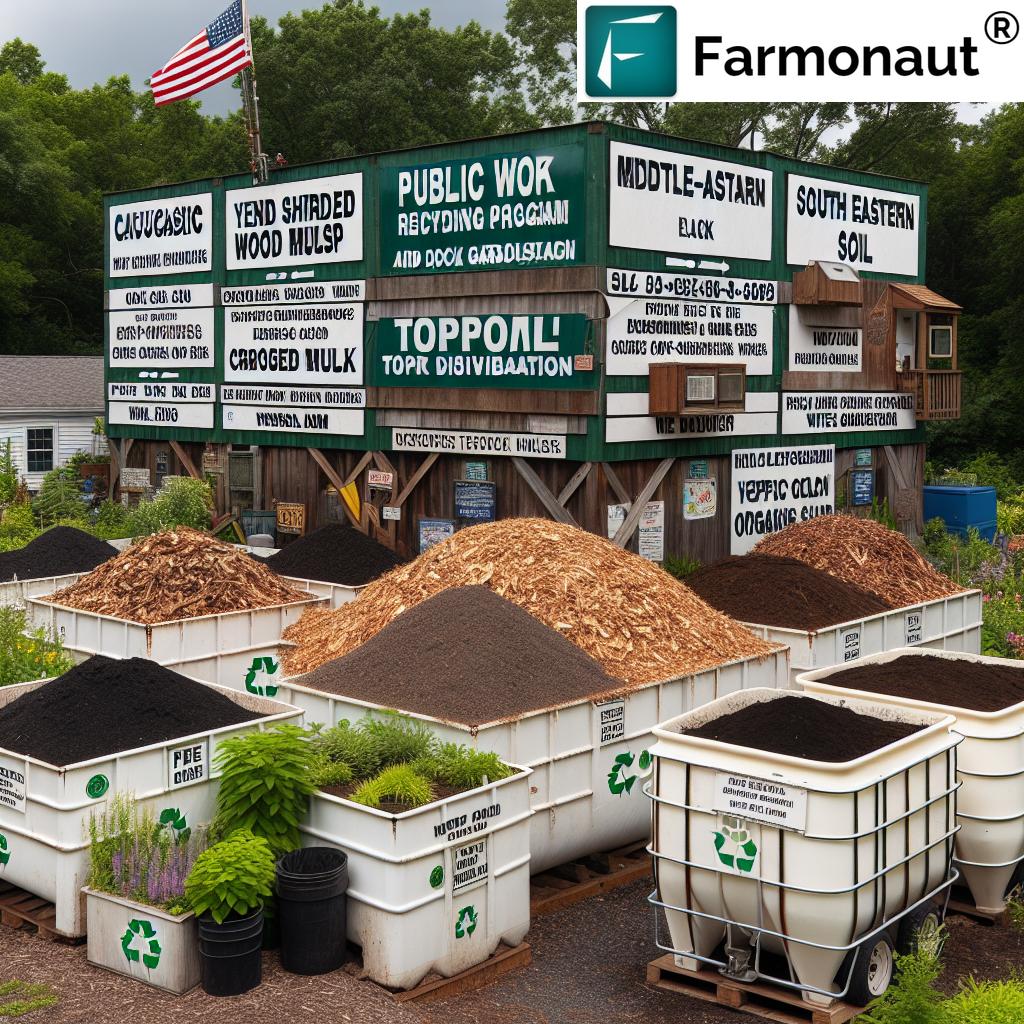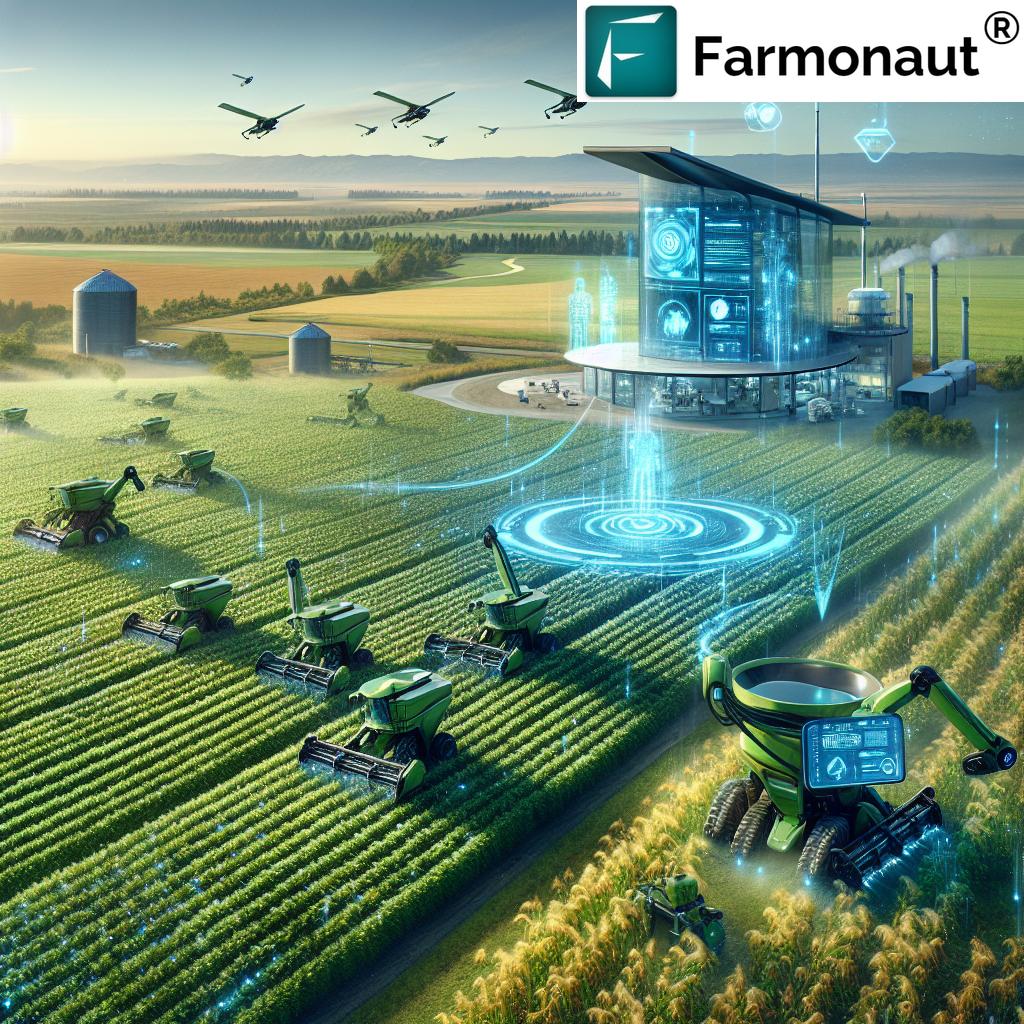Navigating Global Grain Markets: How Midwest Farmers Adapt to Virtual Trade in 2024
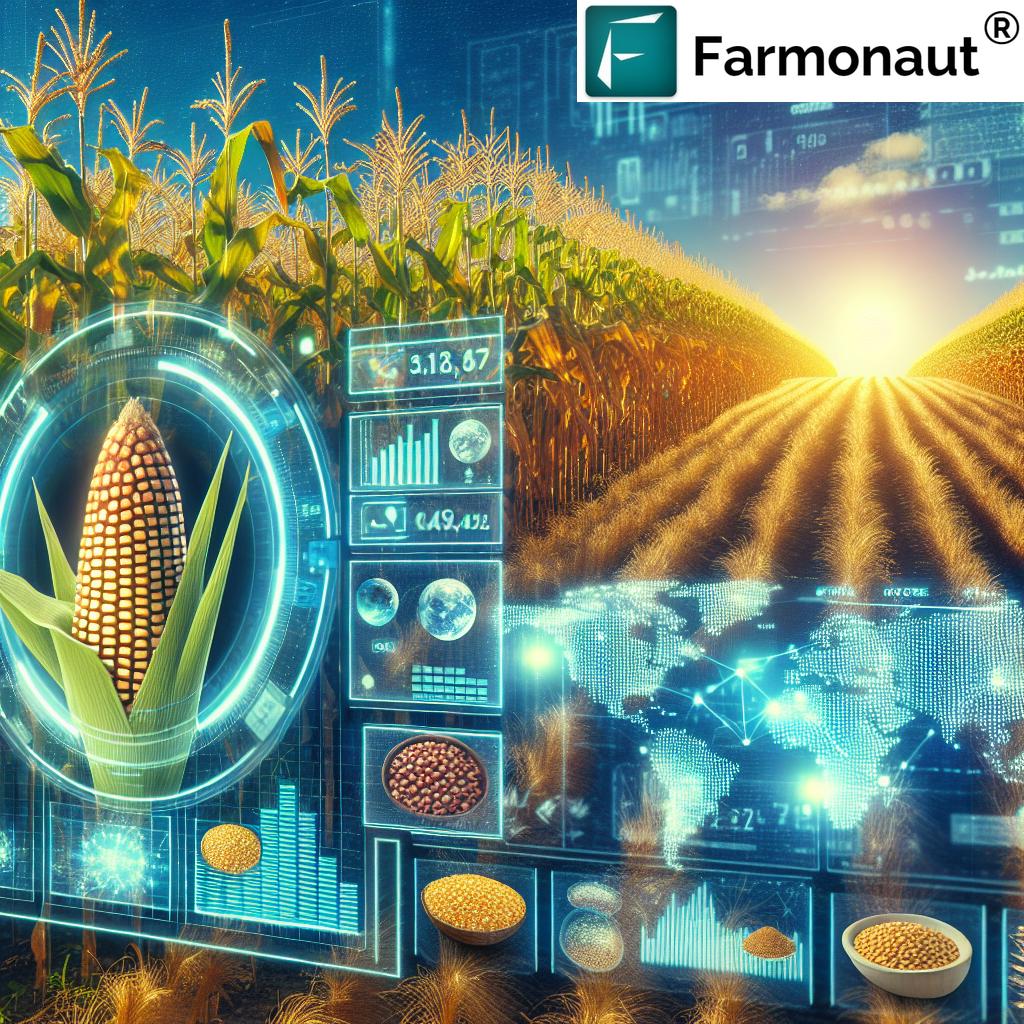
“In 2024, US Grains Council adapts to 100% virtual farming meetings, revolutionizing Midwest agricultural trade practices.”
As we navigate the ever-evolving landscape of global grain markets in 2024, the US Grains Council finds itself at the forefront of a digital revolution in agricultural trade. The Midwest, long known as America’s breadbasket, is adapting to a new era of virtual trade that is reshaping how we connect, negotiate, and conduct business on the international stage. In this comprehensive exploration, we’ll delve into how farmers from the prairies of Iowa to the fertile fields of Illinois are embracing technology to overcome agricultural trade challenges and seize new opportunities in the global marketplace.
The Digital Transformation of Midwest Agriculture
The year 2024 marks a significant milestone in the history of US Midwest crop production. Gone are the days when international agricultural partnerships relied solely on face-to-face meetings and handshakes. Today, we’re witnessing a paradigm shift as virtual farming meetings become the norm, connecting farmers from the heartland with buyers from across the globe.
This transition hasn’t been without its challenges. The agricultural sector, traditionally rooted in personal relationships and tactile experiences, has had to rapidly adapt to a world where screens replace fields and digital handshakes substitute for the real thing. However, the resilience and innovation inherent in the farming community have turned these challenges into opportunities for growth and expansion.
The US Grains Council: Pioneering Virtual Trade
At the heart of this transformation is the US Grains Council, an organization that has been instrumental in promoting American grain exports for decades. In 2024, the Council has fully embraced the digital age, leveraging cutting-edge technologies to facilitate trade, share knowledge, and build relationships across borders.
- Virtual Crop Tours: Buyers from countries like China, Japan, and Brazil can now “walk” through Midwest cornfields without leaving their offices.
- Online Trade Missions: Digital platforms enable real-time negotiations and contract signings, streamlining the export process.
- Webinars and Digital Conferences: Expert-led sessions on crop quality, market trends, and sustainable farming practices are now accessible worldwide.
These initiatives not only maintain the United States‘ position as a leading grain exporter but also open up new markets and strengthen existing partnerships in ways previously unimaginable.
Adapting to Market Shifts: The China Factor
“China’s shifting grain import policies in 2024 significantly impact global corn market trends, affecting millions of bushels traded.”
One of the most significant factors influencing global corn market trends in 2024 is the evolving relationship between the US and China. As the world’s largest corn importer, China’s policy shifts have sent ripples through the global grain markets, challenging Midwest farmers to adapt quickly.
The US Grains Council has responded by intensifying its virtual engagement with Chinese buyers and policymakers. Through targeted online seminars and one-on-one digital meetings, American farmers are navigating these complex waters, ensuring that US grain exports remain competitive in this crucial market.
Innovative Strategies in Agritech
The digital transformation extends beyond trade meetings. Midwest farmers are increasingly turning to advanced technologies to optimize their production and stay competitive in the global market. Here’s how agritech innovations are reshaping trade:
- Precision Agriculture: Satellite imaging and IoT sensors provide real-time data on crop health and yield predictions, allowing farmers to make informed decisions and provide accurate information to international buyers.
- Blockchain for Traceability: Implementing blockchain technology ensures transparency in the supply chain, a critical factor for many international markets concerned about food safety and quality.
- AI-Powered Market Analysis: Artificial intelligence helps farmers and traders analyze global market trends, enabling better decision-making in a volatile trade environment.
These technological advancements are not just improving efficiency; they’re fundamentally changing how Midwest farmers approach international trade.
Sustainable Grain Farming Practices: A Global Imperative
As we navigate the complexities of international trade, sustainable grain farming practices have become more than just a buzzword—they’re a necessity. Midwest farmers are leading the charge in implementing eco-friendly techniques that not only benefit the environment but also appeal to conscientious buyers around the world.
- Conservation Tillage: Reducing soil disturbance to improve soil health and reduce carbon emissions.
- Precision Fertilizer Application: Using GPS-guided equipment to apply fertilizers more efficiently, reducing runoff and improving yield.
- Cover Crops: Planting crops like clover or rye between harvests to prevent soil erosion and enhance soil fertility.
These practices are showcased through virtual farm tours and online demonstrations, allowing international buyers to see firsthand the commitment of Midwest farmers to sustainability. This transparency has become a key selling point in global markets where environmental concerns are increasingly influencing purchasing decisions.
The Unexpected Benefits of Virtual Summits
While the transition to virtual trade was initially seen as a necessary adaptation to global challenges, it has yielded unexpected benefits that are reshaping the future of agricultural commerce:
- Broader Reach: Virtual events allow participation from a wider range of stakeholders, from small-scale farmers to large agribusinesses.
- Cost-Effective Networking: Reduced travel expenses mean more resources can be allocated to market development and research.
- Data-Driven Insights: Digital platforms provide valuable data on participant engagement and market interests, informing future strategies.
- Year-Round Engagement: Virtual platforms enable continuous communication, moving beyond the limitations of seasonal trade shows.
These advantages have not only helped maintain US grain exports but have also opened up new avenues for growth and innovation in the agricultural sector.
Farmonaut: Empowering Midwest Farmers in the Digital Age
In this era of digital transformation, tools like Farmonaut are playing a crucial role in empowering Midwest farmers. Farmonaut’s satellite-based farm management solutions offer real-time insights that are invaluable for both crop management and international trade negotiations.
With Farmonaut’s advanced crop health monitoring capabilities, farmers can:
- Provide potential buyers with up-to-date information on crop conditions and expected yields
- Make data-driven decisions to optimize production and quality
- Demonstrate their commitment to sustainable farming practices
These capabilities align perfectly with the needs of modern agricultural trade, where precision and transparency are paramount.
Navigating Market Fluctuations with Data-Driven Insights
In the volatile world of global grain markets, access to timely and accurate data is crucial. Farmonaut’s AI-powered advisory system, Jeevn AI, provides Midwest farmers with:
- Real-time market insights
- Personalized crop management strategies
- Weather forecasts that impact planting and harvesting decisions
This wealth of information enables farmers to make informed decisions about when to plant, harvest, and sell their crops, maximizing their competitiveness in the global marketplace.
The Role of Relationship-Building in Virtual Trade
While technology has revolutionized how we conduct trade, the importance of relationships in agriculture remains paramount. The challenge for Midwest farmers and the US Grains Council in 2024 is to build and maintain these crucial connections in a virtual environment.
- Virtual Networking Events: Organized online meetups that mimic the casual interactions of traditional trade shows.
- Cultural Exchange Programs: Digital initiatives that foster understanding between US farmers and international buyers.
- Personalized Virtual Tours: Tailored online experiences that showcase individual farms and their unique stories.
These strategies are helping to bridge the gap between the physical and digital worlds, ensuring that the personal touch that has long characterized agricultural trade is not lost in the transition to virtual platforms.
The Future of US Grain Exports: A Data-Driven Perspective
As we look to the future of US grain exports, it’s clear that data will play an increasingly central role. Let’s examine some key statistics and projections:
| Grain Type | Export Volume (est. million metric tons) | Top Export Destinations | Virtual Trade Adaptations |
|---|---|---|---|
| Corn | 65 | China, Mexico, Japan | Virtual crop tours, AI-powered yield forecasts |
| Soybeans | 55 | China, European Union, Egypt | Blockchain traceability, online trade missions |
| Wheat | 25 | Philippines, Mexico, Japan | Digital quality assurance seminars, virtual B2B meetings |
This data underscores the importance of adapting to virtual trade practices while highlighting the continuing strength of US grain exports in the global market.
Overcoming Challenges in Virtual Agricultural Trade
While the benefits of virtual trade are numerous, Midwest farmers and the US Grains Council have had to navigate several challenges:
- Digital Divide: Ensuring all farmers, regardless of size or location, have access to the necessary technology and internet connectivity.
- Building Trust Virtually: Developing strategies to establish and maintain trust with international partners without face-to-face interactions.
- Cybersecurity: Implementing robust security measures to protect sensitive trade information and negotiations.
- Adapting to Time Zones: Coordinating virtual meetings across multiple time zones to accommodate global partners.
Addressing these challenges has required creativity, investment in infrastructure, and a commitment to ongoing education and training for all stakeholders in the agricultural trade ecosystem.
The Impact of Virtual Trade on Rural Communities
The shift to virtual trade hasn’t just affected individual farmers; it’s transforming entire rural communities across the Midwest. Here’s how:
- Job Creation: New roles in digital marketing, data analysis, and virtual event coordination are emerging in agricultural communities.
- Educational Opportunities: Local schools and colleges are adapting curricula to include agritech and digital trade skills.
- Infrastructure Investment: Increased demand for high-speed internet is driving improvements in rural connectivity.
- Global Exposure: Virtual trade is bringing international perspectives directly to rural areas, broadening cultural horizons.
These changes are helping to revitalize rural economies and create new opportunities for the next generation of agricultural professionals.
Leveraging Farmonaut for International Market Development
Farmonaut’s suite of tools is not just benefiting individual farmers; it’s also playing a crucial role in agricultural market development strategies on an international scale. Here’s how:
- Data-Driven Market Analysis: Farmonaut’s satellite imagery and AI-powered insights help identify trends and opportunities in global markets.
- Quality Assurance: Real-time crop health monitoring provides confidence to international buyers about the quality of US grain exports.
- Sustainability Metrics: Farmonaut’s carbon footprinting feature allows farmers to quantify and communicate their environmental efforts to eco-conscious markets.
By integrating Farmonaut’s technology into their market development strategies, the US Grains Council and Midwest farmers are setting new standards for transparency and efficiency in international agricultural trade.
The Role of Government in Supporting Virtual Agricultural Trade
As the landscape of agricultural trade evolves, government support has been crucial in facilitating the transition to virtual platforms. Key initiatives include:
- Grants for Digital Infrastructure: Funding to improve rural broadband access and digital literacy programs.
- Trade Policy Adaptation: Updating regulations to accommodate digital transactions and virtual inspections.
- International Cooperation: Diplomatic efforts to ensure smooth digital trade relations with key partner countries.
- Research and Development: Investing in agritech innovations to keep US farmers at the forefront of global markets.
These government efforts, combined with the ingenuity of Midwest farmers and organizations like the US Grains Council, are ensuring that American agriculture remains competitive in the digital age.
Looking Ahead: The Future of Global Grain Markets
As we conclude our exploration of how Midwest farmers are adapting to virtual trade in 2024, it’s clear that the future of global grain markets is digital, data-driven, and more interconnected than ever. The challenges posed by the shift to virtual platforms have spurred innovation and opened up new possibilities for international collaboration and market expansion.
Key trends to watch in the coming years include:
- Further integration of AI and machine learning in trade negotiations and market analysis
- Expansion of blockchain technology to enhance traceability and build consumer trust
- Development of virtual and augmented reality tools for immersive remote farm visits
- Increased focus on personalized nutrition driving demand for specialty grains
As these trends unfold, tools like Farmonaut will continue to play a vital role in empowering farmers with the data and insights they need to thrive in an ever-changing global marketplace.
For developers looking to integrate cutting-edge agricultural data into their own applications, Farmonaut offers a robust API. Explore the API Developer Docs to learn more about leveraging satellite and weather data for innovative agritech solutions.
Conclusion: Embracing the Virtual Frontier
The journey of Midwest farmers into the realm of virtual trade is a testament to the resilience and adaptability of the agricultural sector. By embracing digital technologies, leveraging data-driven insights, and maintaining a commitment to sustainability and quality, US grain exports are not just surviving in this new era—they’re thriving.
As we look to the future, it’s clear that the skills and strategies developed in navigating virtual trade will continue to shape the global grain markets for years to come. The Midwest’s farmers, armed with innovative tools like Farmonaut and supported by organizations like the US Grains Council, are well-positioned to lead the way in this new digital frontier of agricultural trade.
FAQ Section
- Q: How has virtual trade impacted US grain exports?
A: Virtual trade has expanded market reach, reduced costs, and increased efficiency in negotiations and transactions for US grain exports. - Q: What role does technology play in modern agricultural trade?
A: Technology enables real-time crop monitoring, facilitates virtual meetings with international buyers, and provides data-driven insights for market analysis. - Q: How are Midwest farmers adapting to digital transformation?
A: They’re embracing tools like Farmonaut for crop management, participating in virtual trade missions, and leveraging AI for market predictions. - Q: What are the main challenges of virtual agricultural trade?
A: Key challenges include overcoming the digital divide in rural areas, building trust virtually, and ensuring cybersecurity in digital transactions. - Q: How does sustainable farming impact international grain markets?
A: Sustainable practices are increasingly important to global buyers, influencing purchasing decisions and opening new market opportunities for eco-conscious farmers.









